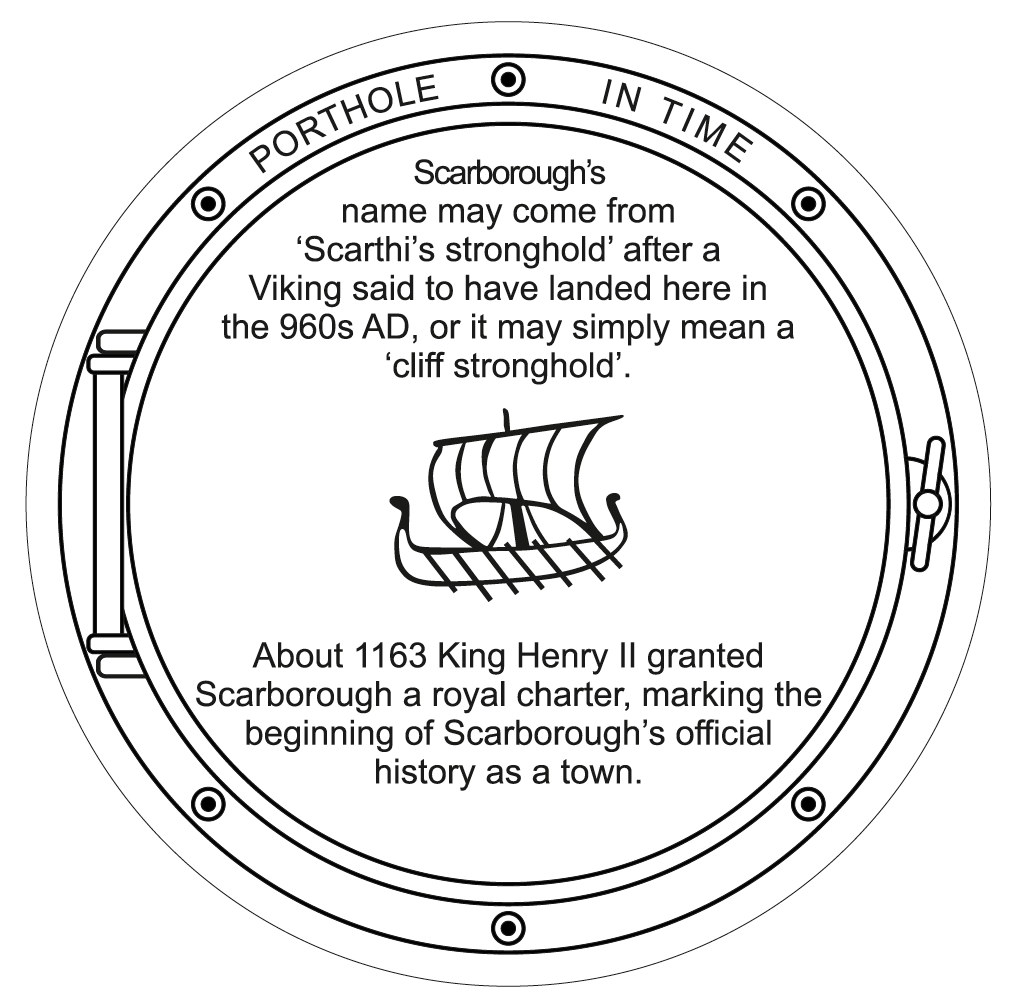
The origin of the name ‘Scarborough’ is uncertain, but there are a few theories relating to Anglo-Saxon or Viking origins. The evidence for a Viking origin of the name Scarborough is found in Icelandic literature (the Kormáks Saga) in which a Viking called Thorgils ‘Scarthi’ (meaning hare-lipped) and his brother, ‘harried Ireland, Wales, England and Scotland and were thought to be very distinguished men. They first established the fort called ‘Skardaburg’. Scarborough would thus mean ‘Scarthi’s stronghold’. Vikings did settle in Yorkshire, and often named places after people’s names or nicknames.
An alternative explanation is that the name Scarborough comes from the Old English for ‘the hill with the fort’, referring to the old Roman signal station on top of Castle Hill. The name may even be a blend of Old English and the Vikings’ Old Norse, which were similar languages.
There is no archaeological evidence for a Viking settlement at Scarborough, but there is no archaeological evidence of an Anglo-Saxon settlement either, before the chapel built in around the year 1,000 CE (AD) on the ruins of the Roman signal station. Little is known about Scarborough around the time of the Norman Conquest – the Domesday Book, a survey of English land in 1086, does not mention it, the coast being part of the manor of Falsgrave. Some claim that a settlement at Scarborough was destroyed in 1066 by a Scandinavian invasion led by Harald Hardrada and Tostig Godwinson, based on evidence from Icelandic Sagas again. We can be more certain about Scarborough’s history after the building of Scarborough’s first castle in the 1130s.
Henry II, King of England from 1154-1189, acquired the area as Crown land in 1155 and began rebuilding Scarborough Castle in 1159. Soon after he granted Scarborough the status of a town by giving it a royal charter, around the year 1163. He likely did this while visiting York and gave the people of Scarborough the same rights as those of York. Scarborough was now required to pay a new tax to the crown - £20 a year in 1163, rising to £30 in 1169 as the town grew around the castle. Scarborough developed economically, around fishing, the export of wool, and the skilled labour needed to build the castle. St Mary’s church was also built and expanded at this time.